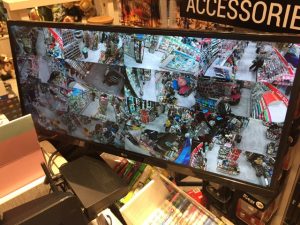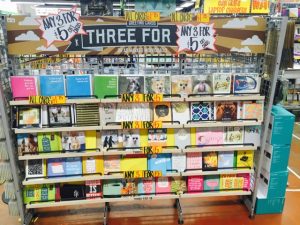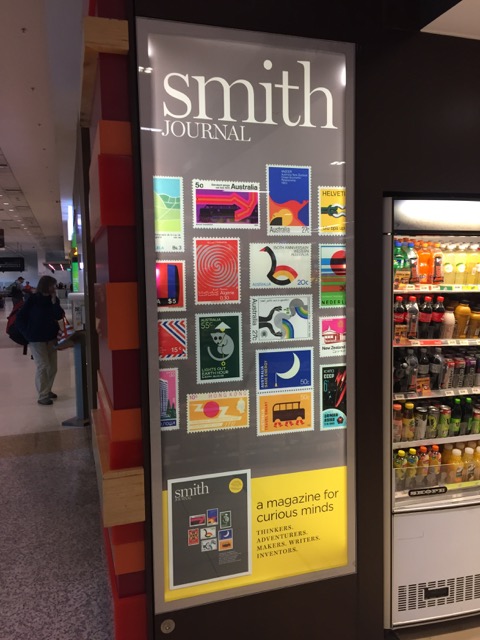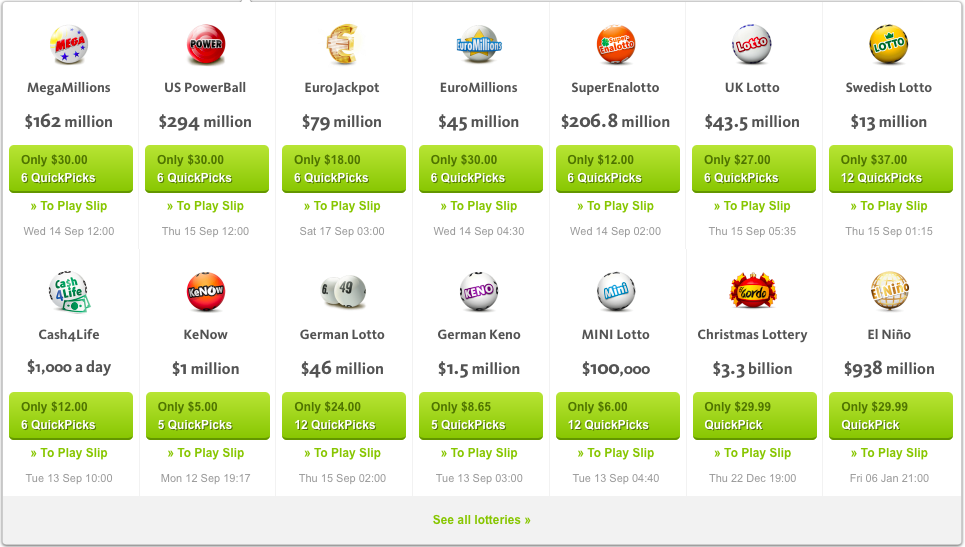The contradiction of a retailer worrying about $100 a month extra in eftpos fees when running a roster bloated by $500 a month
Some management issues get more attention than others in any business, especially in small business retail like a newsagency.
I guess it is the low hanging fruit philosophy – complain about and deal with the issues that are easier to reach an deal with rather than those out of easy reach.
The thing is, sometimes the pay-off is better for the more challenging issues to resolve.
Take eftpos fees. Newsagents love to bash their eftpos provider and will change in a heartbeat for what appears to be a cheaper fee. They see the move as an easy win.
Comments on this blog reflect the level of interest in eftpos fees. It is considerable.
Now think about the employee roster and the labour costs in your business. Again, comments here reflect the interest in this topic. It is minimal.
Trimming the roster can provide many times more savings to the business than switching eftpos provider yet many newsagents are reluctant to make any such move.
You either want to manage the business for lower overheads or not. The roster accounts for between 9% and 11% of operating costs yet it is usually only reluctantly considered.
Why is that? Why switch eftpos providers to save less than you could save by overhauling the roster?
I think the challenges with roster trimming are that it is personal – you are friends with employees and, it can affect your lifestyle as you might have to work more hours.
The question has to come down to the motivation for any business decision. If it is about achieving a lower overhead for the business, then pursue that through the whole business and not just one part that makes you angry, such as eftpos fees. Be serious about your goal and reach for further away fruit that may provide you a better financial return.
I know of several retailers who have recently focused on eftpos fees to save around $100 a month while running a bloated roster that could be trimmed by between $6,000 and $25,000 a year.
Hubbed partners with 7-Eleven
Hubbed has a stand at the Sydney Gift Fair where they are having out a brochure pitching retail outlets. The newsagent N is on the flyer on the same line as the 7-Eleven logo. The ANF has a stand at the trade show too, with no obvious mention of Hubbed. The ANF did at one stage have a financial interest in the Hubbed business – when they endorsed it and launched it to newsagents.
Also at this Gift Fair, Australia Post has a stand offering services to online retailers. This is not their first outing at a gift fair. What is different this time is their engagement with suppliers – they have visited each stand in a proactive move.
NSW newsagents expressing concerns about the future of GNS
I have been in Sydney since Friday for the Reed Gift Fair and through the course of the weekend have spoken with plenty of newsagents. Several asked me what I thought would happen with GNS.
I have no insights and was interested in their views. Each expresses grave concerns for the future of the business.
One newsagent told me they could not even purchase a third of what they needed in a visit last week. Another said they have stopped buying because of supply inconsistencies.
These and other comments were from newsagents raising the issue. They were not prompted. GNS leadership needs to communicate more with newsagents if they want tor stain their business.
Retailer fined for misleading advertising on discounts
Shirt retailer Charles Tyrwhitt was fined $10,800 by the ACCC for advertising was / is pricing when the shirts were never sold for the was price. The Age has the story.
This is an important story as the obligations on retailers when it comes to price claims is clear. The ACCC website offers excellent guidelines on this specific topic:
Two-price comparison advertising
Businesses often make comparisons between product prices being charged and:
- the company’s previous pricing (including ‘was/now’ or ‘strike through’ pricing or by specifying a particular dollar amount or percentage saving)
- the ‘cost’ or wholesale price
- the competitor’s price
- the recommended retail price (RRP).
Businesses that use such statements must ensure that consumers are not misled about the savings that may be achieved.
Statements such as ‘Was $150/Now $100’ or ‘$150 Now $100’ are likely to be misleading if products have not been sold at the specified ‘before’ or ‘strike through’ prices in a reasonable period immediately before the sale commences.
Such statements are also likely to be misleading if only a limited proportion of a product’s sales were at the higher price in the period immediately before the sale commences. The volume or proportion of sales that may result in such statements being misleading will depend on the circumstances of each case.
The length of the period will depend on factors such as:
- the type of product or market involved
- the usual frequency of price changes.
If a business has a policy or practice of discounting goods when not on sale and uses two-price advertising in relation to sale periods, there is a significant risk that the use of two-price advertising will involve conduct that is misleading. The business would be representing to consumers that they will make a particular saving if they purchase the item during the sale period, when this is not necessarily the case.
Similar considerations apply to the specification of dollar amount or percentage savings such as 60% off.
I mention this today as I know of businesses that use was / is and discount pricing when the price promoted is the only price the goods have ever been sold for. As the story in The Age shows, you don’t want to be caught misbehaving as the financial penalty is considerable.
In our channel there are risks in the ink space particular.
Sunday newsagency challenge: don’t let your buying hold you back
Too many newsagents think they can’t sell expensive brand items. These newsagents, if given the opportunity, buy cheap and this defines their business. A shopper buying on price is less likely to be loyal. See what your business can achieve, stock higher priced items. See how high you can lift the price bar.
Sunday newsagency management tip: do this if your year on year sales are down
If your year-on-year sales are not down in your business, this advice is not for you.
If your year-on-year sales are down, something has to change if you want to turn the situation around, please read on.
If you keep doing what you have been doing, the sales results in your business will be what they have been.
It would be a mistake to think that external factors are the sole reason your sales are down.
So, change is necessary – change in what you sell, how you merchandise and how you promote.
It is only from change that the sales decline could be arrested and reversed.
Look for u-turn or right turn opportunities, changes you can implement to divert you from your current path.
This is the only step you can take to reverse the situation: turning away from what you have been doing as you know how that will end … the destination is in your own numbers.
FOOTNOTE: For what it is worth, I think this advice is among the most important I have ever published on this blog and, mist likely, among the least that will be followed.
Sunday newsagency marketing tip: bring Spring into the shop
 It is Spring, time to celebrate the end of Winter and there is no better way to visually do this than with a colourful display of artificial flowers in the business. This type of display, seen from outside the business, ia perfect marketing activity. Promote the display on social media too and invite customers to share photos of their garden.
It is Spring, time to celebrate the end of Winter and there is no better way to visually do this than with a colourful display of artificial flowers in the business. This type of display, seen from outside the business, ia perfect marketing activity. Promote the display on social media too and invite customers to share photos of their garden.
Good security camera coverage in the newsagency
 I was in a Sydney newsagency yesterday with 16 cameras monitoring the shop and a screen at the counter for watching.
I was in a Sydney newsagency yesterday with 16 cameras monitoring the shop and a screen at the counter for watching.
The other, and probably more important, benefit of the screen is to show customers the store is monitored.
The more a person thinks they are likely to be caught the less likely they are to steal from a business (or home). St least that is what police have told me. hence the value of the screen at the counter showing the live feeds from the sixteen cameras.
With camera systems costing far less today than a few years ago, they more quickly pay for themselves as deterrents with this type of counter placement of the screen and with obvious placement of cameras in-store.
With theft costing between 3% and 5% of product revenue, investing in a deterrent is important, it provides a good return.
A side benefit of good camera coverage of the store is the ability to watch shopper traffic and learn from their interaction with displays. I find it particularly useful to fast-forward through footage to learn from customer actions in the business. The insights are valuable.
Scottish model promotes newsagents
Good to see Scottish model Sasha promoting newsagents on Twitter with this tweet:
Any publicity and all that…
Newsagent suppliers: is poor technology hurting your sales?
Newsagents prefer to deal with efficient suppliers who make doing business easy. Doing business easy starts with a good website. A good supplier website needs:
- The ability to order and reorder online, easily and with certainty of stock availability and certainty of when the goods will be shipped.
- An easily navigated product catalogue. Navigated by category, brand, licence and keyword. With multiple photos for items as appropriate.
- The ability to preorder based on shipments expected into the warehouse.
- Transparency at the time of ordering of the actual price to be billed and appropriate freight.
- An emailed confirmation of the order along with a CSV file ready for importing.
- Confirmation when the order has shipped – with shipment occurring within one working day of the placement of the order.
- The provision of a tracking number and weblink for the store to track the location of the shipment.
There will be some suppliers who will say this is too complex. I don’t think it is.
I know of newsagent suppliers who are losing newsagent business because their tech interface is out of date and unhelpful to the retailers they wish to supply.
As newsagents have become more tech engaged it only natural they expect their suppliers to be up to speed.
New Lottoland ad continues the sledge against small business newsagents
Here is the new ad from Lottoland. It continues to sledge and mock newsagents. I suspect they are doing this because small business newsagents are easy targets for them. This ad and their earlier ad could help Tatts by migrating people from in-store purchase to online. Tatts could benefit from this migration whereas small business newsagents do not.
From what I can see, those who claim to support newsagents are quiet about what to me looks like an attack by Lottoland.
Where is Tatts in this battle? If they really cared about their retail network they should be out there, on TV, supporting the network. Instead, their main engagement at the moment is the demand their retailers spend between $25,000 and $35,000 on in-store infrastructure without a plan on how this will help in combating this new competitor.
As I noted here earlier this week, the Lottoland product offer is compelling. It is their attack ads I find offensive to small business newsagents.
Tyro – small business focussed banking
I spent yesterday at Tyro in Sydney hearing about small business focussed innovations in the banking and EFTPOS areas. Yesterday’s session to POS software companies was the culmination in months of work by Tyro on new products. I am grateful to Tyro for the opportunities to discuss these products as they were being developed over the months, leading up to yesterday.
The Xero integration is particularly beneficial as it eliminated double handling, saving time and cutting mistakes.
At the heart of the Xero integration is the Tyro smart account. The terms associated with this account are better what small businesses usually see from the major banks. This account also facilitates quickly approved unsecured financing for small businesses. I think this will interest newsagents evolving their businesses.
Here is a video released yesterday sipping through the Xero integration.
Just in case you think this post is an ad, it is not as what I have written about is available to any of the Tyro POS software partners and the Xero interface is available to any of the Xero partners.
Typo teaches us a thing or two about discounting
Typo hit Twitter just now promoting a 40% store wide discount at their Chadstone, Melbourne, store today.
This tweet teaches us several things:
- Be bold. 40% is a good discount. Too often retailers start small and don’t get the traction they need.
- Make it each. The Typo store wide approach is easily understood.
- Promote on social media. It is free and outside your four walls.
- Set boundaries. The Typo discount is off full priced merchandise. This precludes the Typo 3 for offers they have throughout their shops.
This magazine competition winner loves magazines
Pacific Magazines flew the customer who won their recent promotion, Win up to $150,000, to Sydney to enjoy some time in the city and have the chance to win up to $150,000.
The folks at Pacific shared this report of the experience and provided a video that is well worth watching for the insights it provides.
Our winner Fiona purchased her magazines and Optus rechargers from newsXpress Darra and Nextra Forrest Lakes in Queensland. Below is the video Hans created that shares the excitement of the draw at our Pacific Magazines office. It would great if you can share this on the blog, as it demonstrates one customers love of magazines, their local newsagent and also the opportunity to engage with the magazine brand.
This is a terrific video. I hope we get to see more videos of engagement like this supporting magazines.
Why three of four newsagencies in one suburb closed
I was in a small suburb recently where three of the four newsagencies serving the suburb had closed over a relatively short period of time. I wanted to find out why as part of a broader project to understand why newsagencies close and to determine if this is a good or bad thing.
This suburb is middle class, quintessentially Australian with average unemployment and, for decades served by four strong newsagencies.
The suburb is also served by several good supermarkets, an Officeworks, a stationery business an gift shops.
The four newsagencies in question were within a few minutes walking distance from each other. That is the way newsagency businesses were located years ago, when newspaper home delivery was the core service of the business. The distribution territory determined the location of the shop.
Back in 1999, when newsagents lost their territorial exclusivity, no strategic work was done to rationalise the locations of newsagencies, except in Victoria where News Corp forced rationalisation of retail locations in areas with dense penetration. That tough work years ago left the Victorian newsagency channel stronger than other states. Victorian newsagents continue to benefit today to what was done back then.
In New South Wales and Queensland suburbs continues to be over serviced with newsagencies in this highly competitive marketplace where convenience stores, petrol outlets supermarkets and other retailers offer the traffic generating products and some services on which the traditional newsagency business relies.
But back to this suburb where three of the four long-term newsagencies closed.
One closed because the owner was tired, wanted out and could not sell because the business had no perceived value. The closure was more of a retirement.
The other two newsagencies closed because they were losing money and appeared unable to make the changes necessary to replace income lost to supermarkets, c-stores and petrol outlets. Small and shrinking distribution businesses did not save them.
All three newsagencies closed because they had not changed, they had not adapted. Yes, it is as simple as that. They watched newspaper, magazine and stationery revenue decline and had not changed the business in any way to replace the foot traffic and associated income.
The newsagency that remained had changed their focus, they introduced a gift department that has evolved and continues to evolve. They introduced toys, too, making the business more appealing. In introducing these they reduced the space in-store allocated to lower margin products, reducing the overheads of those categories on the business.
That newsagency has not stood still to benefit from the three closures. They continue to change, further from what is traditional for a newsagency.
Could the suburb have supported four newsagencies? I think so if the newsagents acted as retailers, if they offered a unique selling proposition through products that are sought after in the area, if they pitched themselves differently to each other. Ion that world, where all four remain, the four businesses would look different, they would not obviously be newsagencies, just as the one remaining business is not obviously a newsagency
In this suburb, the cause of closure is inaction by old school newsagents. While there will be variations to this store elsewhere, I think the single most common reason for newsagency closures is the failure of the business owner to be a retailer. Sure, it is hard work – it takes continuous investment of time and money. The result is a business of value rather than a business you close.
The traditional newsagency – newspapers, magazines, stationery, lotteries and cards – has no future except in the most exceptional circumstances.
If that traditional model is your business, my advice is to confront the challenge of inevitable decline with fast and focused action. You can turn things around but work on that needs to start right away.
Too many families in our channel are losing their investment because of ignorance. this has to change.
Comparing Lottoland to Tatts Group’s The Lott app
Over the last ten days I have been playing with the Lottoland app to compare the real life product with that we are seeing relentlessly promoted on our TV screens.
I have also been comparing Lottoland with the Tatts app, now branded as The Lott, as that app is the competitor more so that the newsagents who are the target of the Lottoland TV commercial.
The sign up with Lottoland was easy, completed in seconds. While it asked for my age, there was no check, no proof required.
Depositing funds was easy too. This part was much faster than Tatts. I was able to buy my first ticket using Lottoland in a couple of minutes.
The Lottoland app and website explain clearly what the product is. There is no illusion about what you are buying. This is from their website:
Given how Lottoland operates, how you purchase tickers and are paid for winning numbers, I suspect the difference between buying a lottery ticket and betting using the numbers you would have selected for the ticket does not matter that much.
While Tatts does not send a notification if your ticket does not win, Lottoland does and they do it well. Take a look at this email:
When you win there is an email too, with prize details. The money is in your account right. Tatts operates the same way.
Where Lottoland is most significantly different is in what it sells. In addition to Australian games, there is a large mix of international games. Here are some of the international games I could play last night:
This to me is the big competitive advantage for Lottoland over Tatts. For people who like to gamble with lottery products, Lottoland has a greater range of products from which to choose compared to the Australian products.
I think the Lottoland challenge for newsagents is two fold: there is the challenge of in-store versus online and there is the challenge of more games more often compared to the small mix of Australian games.
While Tatts will fight Lottoland on the front of product mix, newsagents have to run their own fight on the issue of in-store versus online. I can’t see Tatts helping too much with that fight as I suspect they prefer online sales. They are certainly enjoying growth online compared to in-store.
The other factor in all this is governments. They stand to lose considerable revenue if lottery purchases migrate from Tatts to Lottoland.
Lottoland is a disruptive business model. Like Uber is to taxis. Like digital is to print. Like Airbnb is to hotels. Like Netflix is to free to air TV.
Competitors ignore disrupts at their peril.
Newsagents need to have a plan because I suspect Lottoland is not here for the short game. They look like they are here to stay.
If newsagents do not have a plan, they could become collateral damage in a fight involving Lottoland, Tatts and state governments.
The plan starts with understanding the opposition. I hope this blog post provides some understanding. If you have tatts in your business, sign up for a Lottoland account and get your own first-hand experience. That could help you develop your own plan.
Newsagents need to deal with this disruptor.
UPDATE.
This morning I received this email, an example of how they upsell. I can see this would be appealing to a regular lottery customer.
Is JB HiFi getting out of greeting cards?
 Checking several JB HiFi outlets over the weekend, it looks like the retailer may be getting out of greeting cards of Three cards for $10. The price is currently 3 cards for $5, or $1.75 for each card. In one store stock was so depleted it was off the stand and in a small location.
Checking several JB HiFi outlets over the weekend, it looks like the retailer may be getting out of greeting cards of Three cards for $10. The price is currently 3 cards for $5, or $1.75 for each card. In one store stock was so depleted it was off the stand and in a small location.
While I have no knowledge of the JB move other than what I have seen in several stores, it appears as if the company is either quitting this line of cards from Hallmark or quitting cards altogether.
I suspect they are quitting greeting cards altogether. The JB retail fleet is run to a tight set of KPIs. I suspect cards did not deliver the return they needed from the space and vestry investment allocated. If true, it would surprise me as I thought the offer looked good, took little floor space and offered a range appealing to the JB shopper.
In the meantime, newsagents located near JB may find a brief impact from the deep discount of quality greeting cards.
 We play in the discount card space in a JB like way. This photo is from my shop. The pitch works with thousands of dollars of these cards sold from a small footprint stand on the lease line that attracts a younger shopper.
We play in the discount card space in a JB like way. This photo is from my shop. The pitch works with thousands of dollars of these cards sold from a small footprint stand on the lease line that attracts a younger shopper.
Multi-item price offers are proving to be successful in the newsagency in 2016 – across multiple categories.
Sunday newsagency challenge: review your hours
Is your open for the right hours? Are you open too long? Are your hours too short? Are you closed when you should be open? re you open when you should be closed?
Business hours are not something to set and forget. They should be reviewed at least annually with adjustments made that deliver to you the best possible financial outcome.
Take a careful look at your hours and see if adjustments are warranted.











